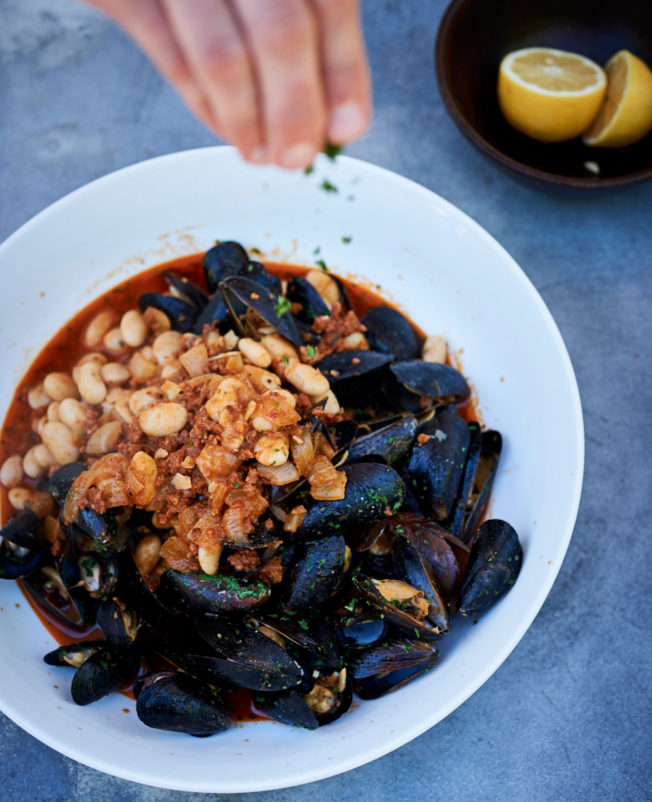
Aatxe chef Ryan Pollnow’s Fino-Steamed Mussels with Chorizo and White Beans.
To make the mussels that he served at his Spanish-inspired feast in wine country, Aatxe chef Ryan Pollnow relies heavily on three main ingredients: a blend of aromatic vegetables, mussels (of course), and plenty of chorizo to boost flavor.
Start by browning chorizo. He starts by sautéeing fresh paprika-laced chorizo. “Chorizo makes everything better. We should have shirts that say that!” he says, caramelizing the Spanish sausage in a large stockpot.
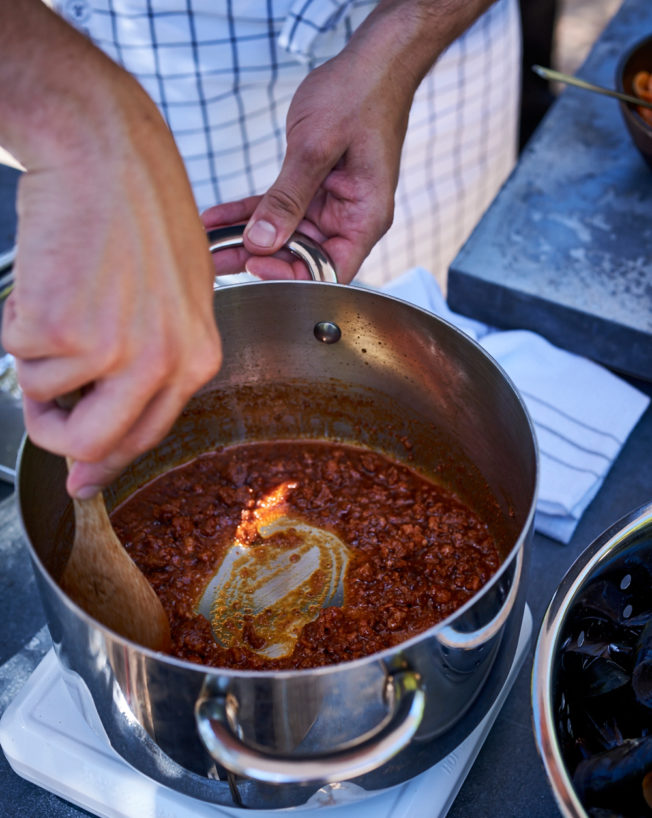
Browning fresh chorizo not only renders flavorful fat, but also toasts the paprika the sausage is spiced with.
Browning high-fat chorizo means rendering plenty of lard. For the dish to taste the way it should, all of that must stay in the pot. “Mussels have no fat and everything’s so lean that you have to keep that all in here,” he explains. “The Pimenton de la Vera [from the chorizo] toasts in the pork fat, and that’s the best part of the base of this dish.”
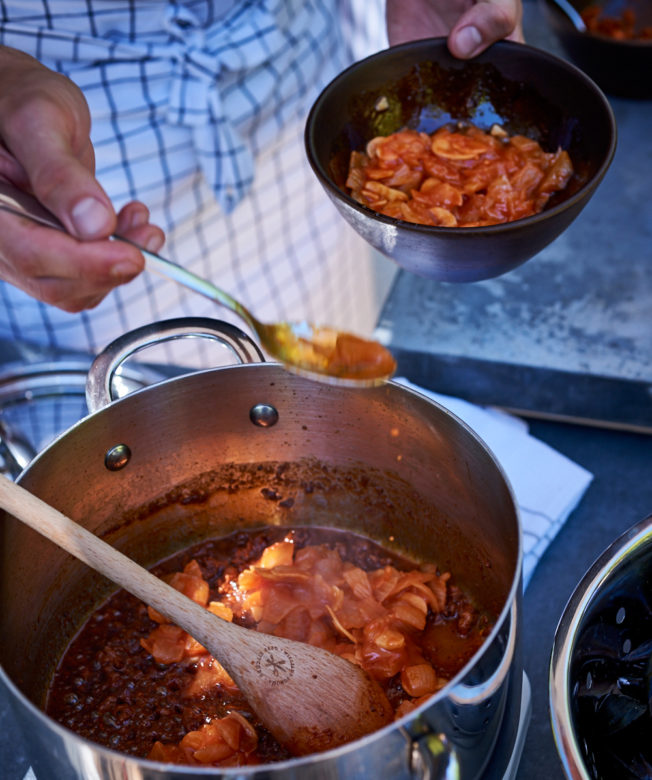
A concentrated vegetable base called sofrito, along with the chorizo, makes a nice base for the mussels.
2. Add in the sofrito. Once the chorizo has browned and become fragrant, it’s time for the workhorse of many Basque kitchens, sofrito. It’s a fragrant, concentrated vegetable mixture popular in Latin American countries that commonly includes tomato, garlic, onion and oil and serves as the base for many Spanish braises, rice dishes, soups and more.
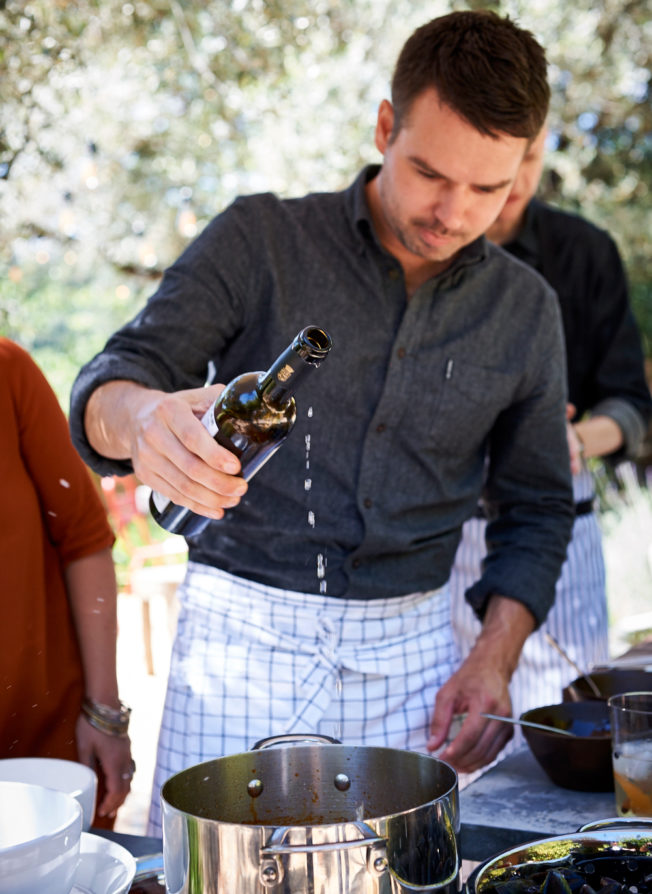
Another secret to great Spanish mussels is a splash of dry sherry.
3. Deglaze with sherry. Ryan then adds fino sherry—a light, refreshing style of Spain’s famous fortified wine—to deglaze the pan. Fino’s prized for its delicate, nutty flavor, which lends acidity and depth of flavor to a seafood dish like mussels. (A tip from the pros: Skip the cooking sherry and buy a high-quality fino. While they only boast a weeklong shelf life once open, they’re great for sipping while cooking; just ask the Aatxe crew.)
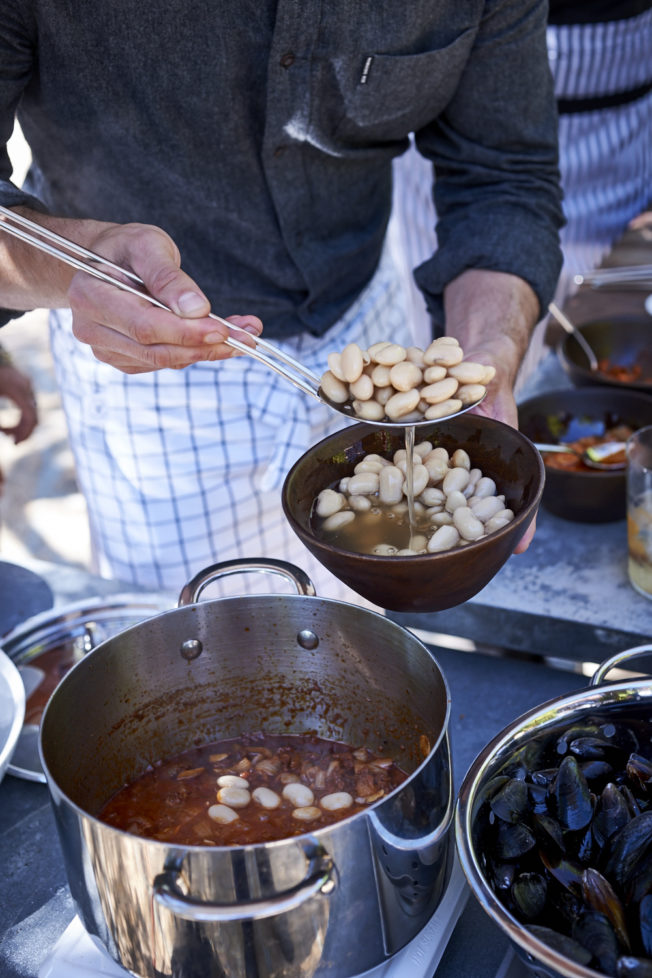
4. Add in tomatoes and beans. At this point, chef Ryan adds tomato juice and beans for a heartier flavor and texture. The Spanish love legumes, and certain regions are even famous for particular types (one Basque town, Tolos, even holds a weeklong festival in honor of its local bean). Aatxe uses large white beans, like Gigantes; other white beans, like cannellinis, also work well.
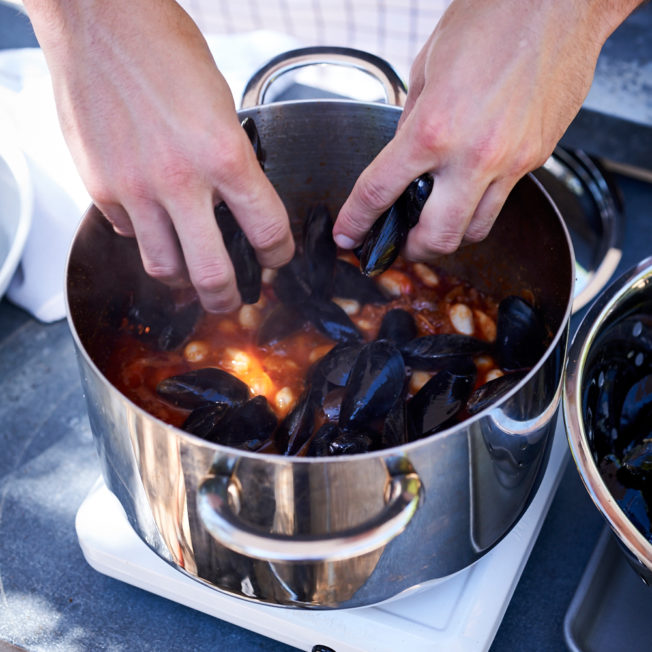
Use the freshest mussels you can find, and discard any that remain closed after cooking.
5. Steam the shellfish. It only takes a few minutes for mussels to open up, and that’s when they’re ready to eat. Mussels come in varying sizes, but the important thing is to use the freshest ones you can get your hands on.
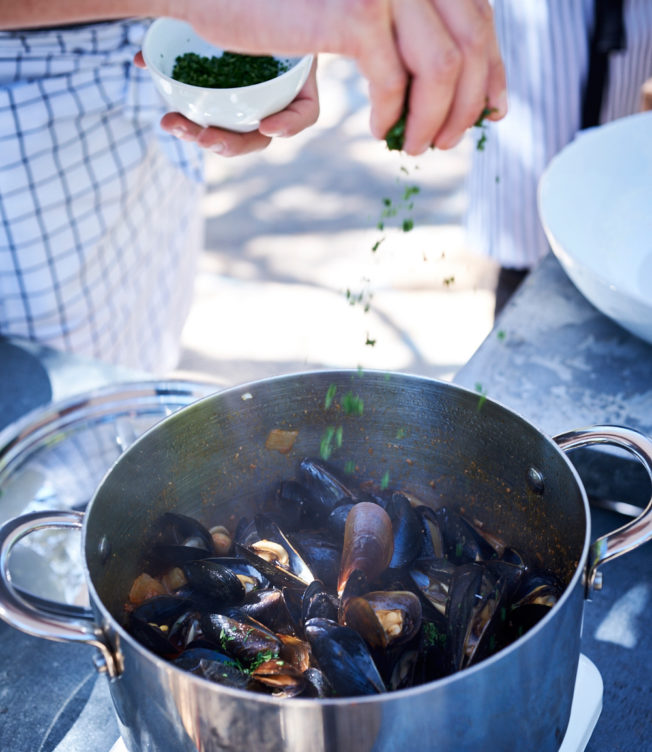
Sprinkle on fresh parsley at the last minute to add zip and brightness.
6. Finish with acid and herbs and serve. At Aatxe, mussels are finished with a generous squeeze of lemon and a handful of freshly-chopped parsley to help the shellfish really pop. Then it’s served with hunks of toasted bread and a garlicky alioli, because let’s be honest: the best part of eating a bowl of fresh mussels is sopping up the broth that’s left over at the bottom of the bowl.
Get the recipe: Fino-Steamed Mussels with Chorizo and White Beans
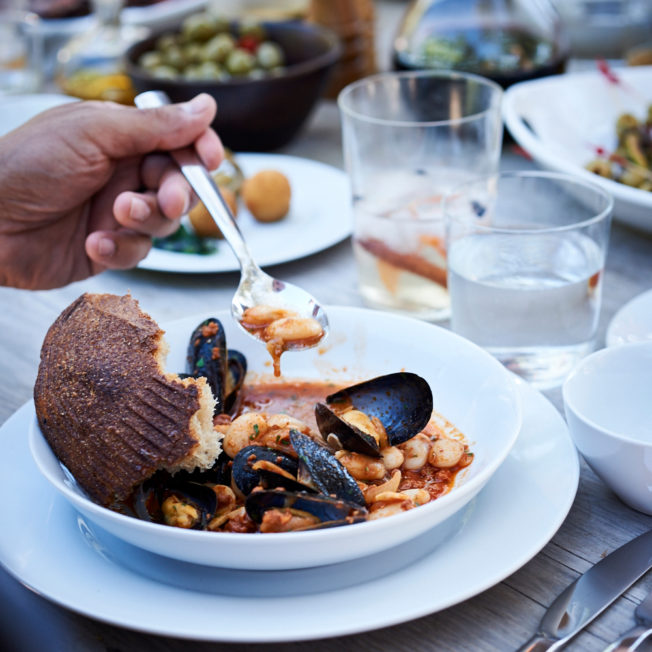
Don’t enjoy this dish without saving the flavor-packed broth for dipping!
Check out more of our day spent with the Aatxe crew, and see more about Aatxe and Ryan’s Spanish feast at williams-sonoma.com/aatxe.

5 comments
where do you get the chorizo? The only kind I can find is the Mexican style chorizo and all the Spanish chorizo I find is hard and dried
I get the fresh chicken chorizo from Whole Foods. They also sell the organic pork, or you can make your own using ground chicken or pork and lots of Spanish flavors like: smoked paprika and cumin. ~ Florentina
Hi Ignacio, A Mexican-style chorizo is fine for this dish — look for one with paprika in it. Like Florentina mentioned, if you can’t locate it in the meat section of your market, you can also make it yourself!
Wow this is a dream! I’m going to get mussels to make this tonight! I have a fabulous smokes Spanish paprika jar in my pantry to use in this. I’m also not sharing this awesomeness. So good!
Thank you for sharing. I love mussels and usually am looking for recipes that involved mussels and cream as I had in Antwerp. But this looks very tasty and appealing as well. Can’t wait to make it to find out.